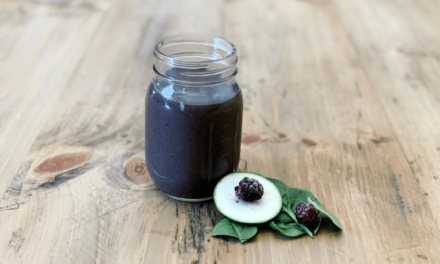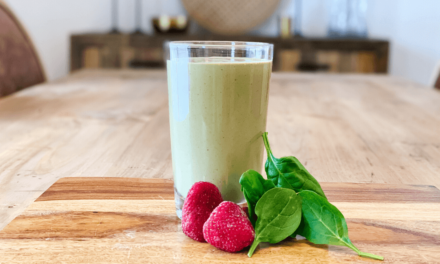Yoga is defined quite literally as “union” or “to yoke.” We take our bodies and unionize it with our mind via our breath, and that is the practice of yoga.
We all know yoga can give us a sense of calm and a clear state of mind, among many other benefits. One of these benefits is that yogis often find their diet improves by eating clean and wholesome foods because it makes them feel better on and off their mat. Or another way to say it, they are tuned in to what their body needs and eat according to what they feel.
And that is the basis for Intuitive Eating.
What is Intuitive Eating?
Intuitive Eating was created by two dietitians, Evelyn Tribole and Elyse Resch in 1995 and is an evidence-based mind-body approach to food, according to the Original Intuitive Eating Pros.
Long story short, Intuitive Eating is providing foods to your body and mind that it needs by tuning into the messages your body is telling you to eat.
Some days it needs more vegetables, and others it might need a bite of chocolate. And that is OK!
This approach to food is a state of being present with yourself and either taking in the foods that you need or removing them to best fit for where you are today as a lifestyle approach.
Sounds a lot like a yoga practice to me.
What You Need to Let Go of with Intuitive Eating
Let the words “diet” and or “counting calories” fly out the window, because that is not what Intuitive Eating is all about. There is no food plan for you to follow, it’s simply listening to what will serve you.
There is debate over whether or not Intuitive Eating will help you lose weight, and Tribole and Resch claim that it is not a weight loss program.
“There is not a single long-term study that shows that weight-loss dieting is sustainable. Study after study shows that dieting and food restriction for the purpose of weight loss leads to more weight gain.” – Tribole, September 12, 2018
Let me be clear, this is not about wanting to lose weight. I believe all of our bodies are capable of amazing things, no matter the shape or size.
So why would someone practice Intuitive Eating? Quite simply to live their life exactly how they need in the present moment. Another strong similarity to one’s yoga practice.

Why this matters for your yoga practice?
Yoga is a daily practice, much like eating. The more we consistently tune into our bodies, the better we feel.
Do you feel better after practicing yoga? Yep, me too. It’s because we’ve heightened our awareness of ourselves and work our physical bodies to feel lighter and more at ease.
The same concept applies to the foods we eat.
Think about practicing yoga in a heated room, does the idea of eating French fries right before class sound like a good idea? Probably not, unless you want to feel heavy as you flow through your Sun Salutations. And there are yogic reasons why we would feel this way.
In Patanjali’s Yoga Sutra’s, he guides us on how to live a more mindful and happier life. One of the Yama’s, the first limb of the Yoga Sutra’s, is Ahimsa, or non-violence. Part of practicing non-violence is being kind to ourselves. This includes omitting negative self-talk and also how we fuel our bodies. By putting processed foods and other unhealthy options is creating harm to our physical state.
In the Niyama’s, the second limb of the Yoga Sutra’s, Patanjali gives us Saucha, or purification and cleanliness. This Niyama applies to the physical space we live in to have an organized and clean environment, clean thoughts to ourselves, and also clean foods. The result of practicing Saucha is creating space for yourself that involves less clutter in order for you to operate at your max capacity.
But we are human, and sometimes ice cream is on the menu. If indulging in a treat will make you feel happy, honor that and listen to how it will serve you. Sometimes it’s a great idea, and sometimes not.
Similar to our physical yoga practice, somedays practicing inversions is a positive effect on ourselves, and some days we just don’t feel like turning our world upside down on our mat.
Can you think of how your yoga practice varies from day to day?
For me, it’s my hamstrings. Years after a hamstring injury, there are days that I can drop down into my full splits without a problem and some days I feel tight where I hurt myself and need to back off.
I need to be aware and present of where I am at that day on my mat to remove the risk of re-injuring myself.
By tuning in to what you truly need that day, we can make more mindful choices of what we put into our bodies.
Do you see the connection of mindfulness and awareness brought by our physical practice and how we choose to eat? Again, it comes down to being present and honoring what you need on that day, in that moment.

10 Principles of Intuitive Eating
To dive in a layer deeper, Intuitive Eating is based on 10 principles to help guide us on how to approach a mindful way of eating, per the creators of this practice by Tribole and Resch.
- Reject the Diet Mentality – let go of the idea of restriction and dieting, because they only limit you and put boundaries on yourself.
- Honor Your Hunger – keep your body fueled with food that gives you energy (and that means some carbohydrates!). This will reduce the urge to overeat or hit excessive hunger. Both do not fuel a yoga practice well.
- Make Peace with Food – allow yourself the freedom to eat what feels right for you.
- Challenge the Food Police – let go of the idea of dieting or eating “good” or “bad” foods. This concept is where dieting comes from, and as quoted earlier, does not help you lose weight.
- Respect Your Fullness – just as we listen to our bodies in a yoga class, listen to the signals your body is telling you when you’re eating and when you are comfortably full.
- Discover the Satisfaction Factor – Enjoy the choice you have made when it comes to the foods you eat. This will lead to a more satisfied and content state.
- Honor Your feelings Without Using Food – take the emotion out of eating and tune into what you truly need to work through your mental state.
- Respect Your Body – Let go of critical thoughts and honor what you are capable of with your given body. We can all do amazing things, despite our shape and size.
- Exercise and Feel the Difference – how do you feel after yoga or another physical activity? Let that be your motivator rather than a vanity one. Again, let go of the calorie counting and allow yourself to just feel good.
- Honor Your Health – choose foods that serve your body and mind over a long period of time.

How to Apply Intuitive Eating to Your Lifestyle
Just as Patanjali states in the Yoga Sutra’s, practicing Ahimsa (non-violence) and Saucha (purification or cleanliness) help us to live a life that if more purposeful for us to be happy.
We all have an understanding of what are healthy foods and what isn’t. So, as you approach your food choices, ask yourself how you can take the lessons you learn from your yoga practice to the kitchen.
- What foods will not cause harm to my body or mind?
- What do I need to eat today to feel good in my body and mind?
- Am I present with what I am eating, or am I distracted by something else?
- How can I clean up my food choices to reduce the “clutter” within my body?
- Do I need to pause and tune in if I am happy with where I am at with my food, my body and my mind?
Yoga is the practice of unionizing our body with our mind. To do this, we need to bring awareness to ourselves and tune in to be present with what is really going on, and what work we need to do to feel good.
All of our bodies are amazing, no matter the shape or size. And because of this, we can all practice yoga in a way that suits our own individual practice. It’s not about body weight, but more for providing yourself the foods that make you feel amazing on your mat and off.
So tune in, what do you need today to feel like your best self?
Source: https://www.intuitiveeating.org












